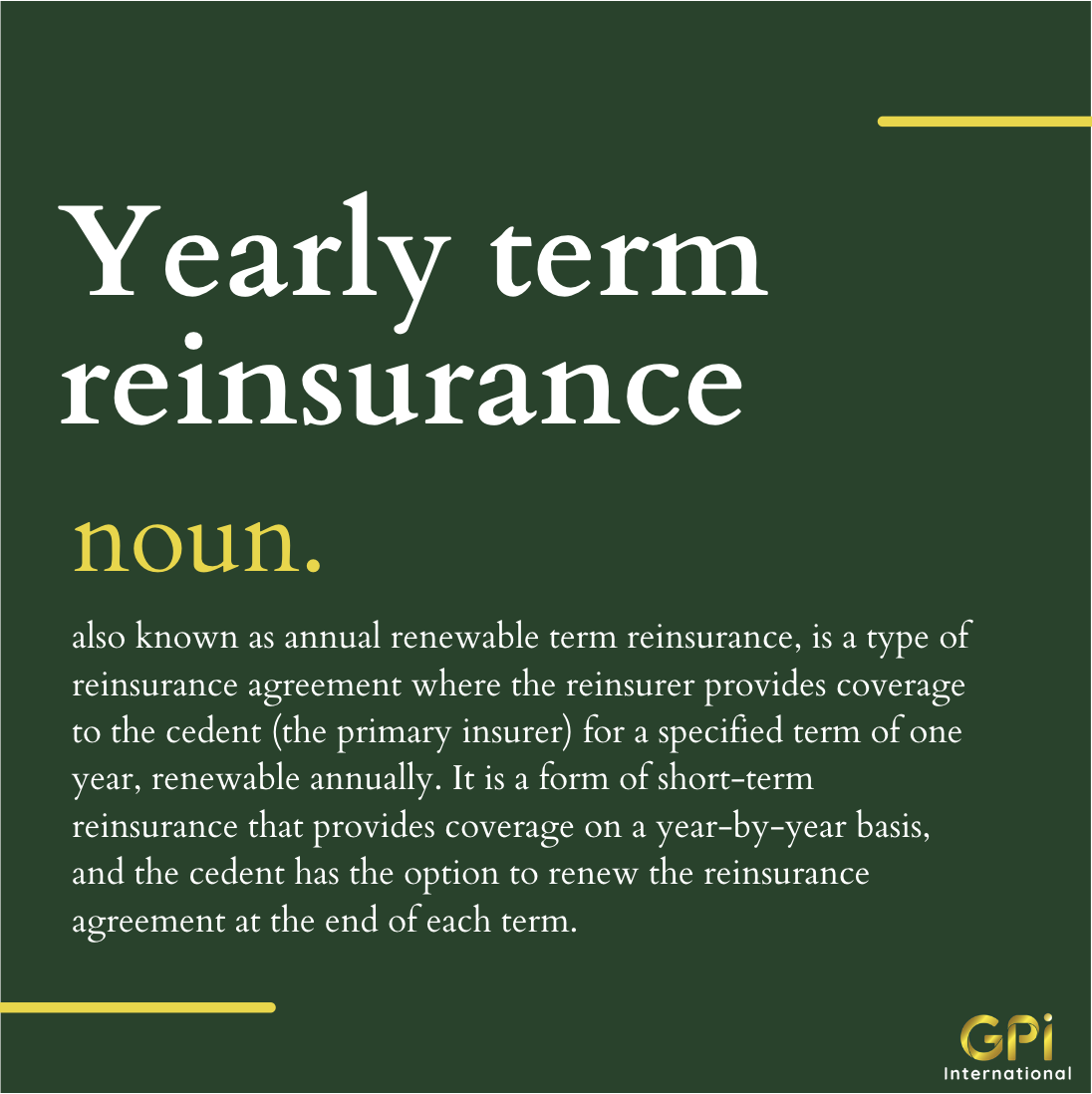Yearly term reinsurance
Also known as annual renewable term reinsurance, is a type of reinsurance agreement where the reinsurer provides coverage to the cedent (the primary insurer) for a specified term of one year, renewable annually. It is a form of short-term reinsurance that provides coverage on a year-by-year basis, and the cedent has the option to renew the reinsurance agreement at the end of each term.
Under a yearly term reinsurance agreement, the cedent pays a premium to the reinsurer for the coverage provided during the specified term. If the reinsured event, such as a loss or claim, occurs during the term, the reinsurer pays the agreed-upon amount to the cedent to cover the reinsured risk, subject to the terms and conditions of the reinsurance agreement.
Yearly term reinsurance is commonly used by primary insurers to manage their risk exposure and protect against catastrophic losses. It provides temporary coverage for a specific term, allowing the cedent to transfer a portion of their risk to the reinsurer. It also offers flexibility to the cedent, as they can choose to renew the reinsurance agreement annually based on their changing risk profile and business needs.
Examples of yearly term reinsurance include:
Property Catastrophe Reinsurance: An insurance company that offers property insurance may purchase yearly term reinsurance to protect against catastrophic losses resulting from events such as hurricanes, earthquakes, or wildfires. The reinsurer provides coverage for a specified term of one year, and the agreement can be renewed annually based on the cedent’s risk exposure and business strategy.
Liability Reinsurance: An insurance company that offers liability insurance, such as professional liability or general liability insurance, may purchase yearly term reinsurance to transfer a portion of their liability risk to a reinsurer. The reinsurance agreement provides coverage for a term of one year, and the cedent has the option to renew the agreement annually based on their risk profile and business needs.
Medical Stop-Loss Reinsurance: A health insurance company may purchase yearly term reinsurance, known as medical stop-loss reinsurance, to protect against high-cost medical claims. The reinsurer provides coverage for a specified term of one year, and the agreement can be renewed annually based on the cedent’s claims experience and risk management strategy.
Yearly term reinsurance allows cedents to transfer a portion of their risk to reinsurers on a short-term basis, providing temporary coverage for specific risks. It is important for cedents to carefully review and negotiate the terms and conditions of the reinsurance agreement, including premiums, coverage limits, and renewal provisions, to ensure it aligns with their risk management and business goals. Consulting with a qualified reinsurance professional can be helpful in navigating the complexities of yearly term reinsurance.





